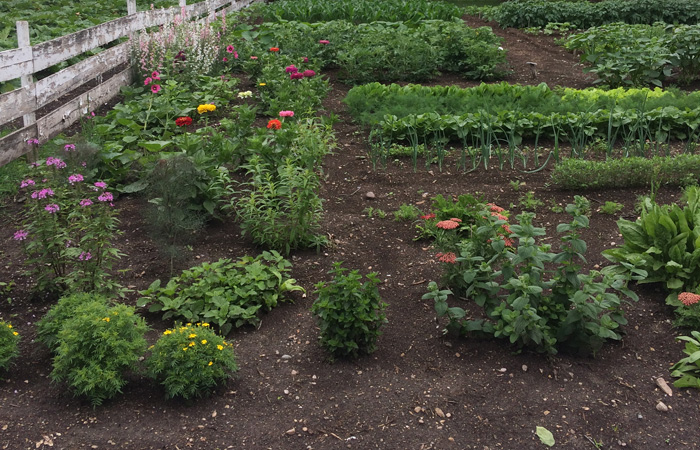The Manitoba Food History Project food truck has been parked in the Mennonite Heritage Village (MHV) parking lot for over a week now, and will be there until July 7. The project’s goal is to collect stories surrounding Manitoba food to determine how our province’s food has been “produced, sold, and consumed,” and how this has changed over time. Their presence at the Village has inspired me to investigate the role food has played in Russian Mennonite history and culture. Mennonites around the world have differing food traditions, depending on their history and geographic location. Here I examine specifically the Russian and Russian-descendant Mennonites that settled in Manitoba in the late eighteenth century and throughout the nineteenth century.
Cottage cheese perogies (Vereniki), farmer sausage (Foarma Worscht), noodles (Kielkje), and summer borscht (Summa Borscht) became popular, everyday foods among the Mennonites living in the Vistula Delta (today Poland) and New Russia (today Ukraine). These foods have become synonymous with the culture of Russian Mennonites and Russian-descended Mennonites. Mennonite food culture has been preserved in numerous cookbooks and food blogs, discussed by historians, and reproduced for tourists who want a taste of Russian Mennonite tradition. Today, this food serves as a cultural touchstone, a way for Mennonites to connect to their heritage and continue centuries-old traditions.
The garden was a vital source of food for Mennonite families. Gardens were planted, cared for, and harvested by women and children and produced healthy additions to family meals. Among the foods commonly grown were potatoes, beans, cucumbers, watermelon, cabbage, tomatoes, kohlrabi, rhubarb, and ground cherries. Herbs were given their own corner of the garden and were used to enhance daily meals. Mennonite favorites were dill, parsley, summer savory, and sorrel. Fresh vegetables and herbs were enjoyed in the warmer months and then were pickled, canned, and dried for use in winter.
Mennonite gardens were also places of cultural change. Mennonites who migrated from New Russia soon found that the Manitoba climate was inhospitable to some of the produce that had been part of their everyday lives. The long growing seasons required by some vegetables and fruits were drastically shorter in a new climate. Mennonite women adapted to these changes by incorporating plants native to Manitoba into their gardens and recipes. But Mennonite history was sustained through the planting of heritage seeds. Brought from New Russia and planted in Manitoba gardens, many of these seeds continue to grow in gardens today.
Another food that accompanied Mennonites on their migrations was zwieback, or “twice baked.” These buns were made with one bun stacked on top of another and then baked twice. They were commonly eaten at Sunday meals, weddings, funerals, and holidays.
The buns were not only a celebratory staple but also became the food of survival for Mennonite immigrants. The journeys Russian Mennonites took as they transplanted “home” from one country to the next were long, and food could be scarce. To ensure their families did not go hungry on these journeys, Mennonite women baked dozens of these buns and then toasted them (hence the term “twice baked”) until they were dry. The toasted buns would last the many months of travel, and perhaps even the first months in Manitoba as Mennonite families established themselves in a new country. Once in Canada, zwieback continued (and continues) to be served on special days and occasions.
In addition to zwieback, cheese and cold meats were served at Faspa, a late afternoon lunch or coffee. On Sunday afternoons, Faspa became an opportunity for socializing with friends and relatives. The zwieback eaten at Faspa were served with jelly, which was quite a treat for Mennonite children, who were only allowed to eat plain buns on the other days of the week.
Throughout the years, Russian Mennonite food was never simply a thing to consume. It served as a means of physical survival on long trips during migrations, and of cultural survival as Mennonite women planted seeds from their old home in New Russia in their new home in Manitoba. Food was also used in social gatherings, which brought people together and strengthened community ties. Mennonite food continues to play a significant role in Mennonite life and culture, and it remains a form of material culture that connects these current-day Mennonites to their past.




